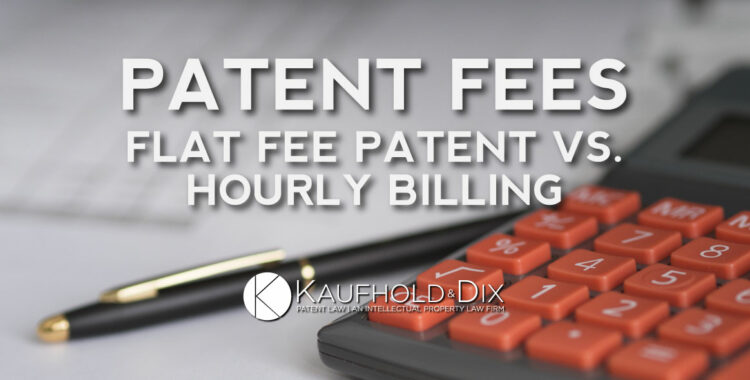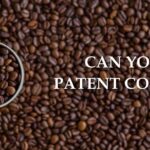Patent Fees: Flat Fee Patent vs. Hourly Billing
When analyzing patent fees, are flat fee patent arrangements better than the traditional hourly billing model?
The short answer is probably yes. In many cases, a flat fee patent arrangement will provide substantial benefits for an inventor seeking a patent. Obtaining a patent can be a critical step to successfully moving a product to market, and patent fees are commonly expected to be very high.
The range of what to expect for patent fees can be extensive, with many stories of inventors paying patent fees of tens of thousands of dollars. In the face of unpredictable and potentially high costs, many inventors, particularly individuals or small businesses, may decide to forego the risk of wasting money filing a patent application and then being unable to continue to pay patent fees required to complete the process. As explained below, flat fee patent arrangements provide several positives for the inventor.
Pros of a Flat Fee Patent Arrangement
Speed and Efficiency
Flat fee patents provide an incentive for the attorney to work efficiently and take away any incentive to delay or slow doing legal work on your behalf. Obtaining a patent involves preparation of the patent application and responding to the patent office. In a flat fee arrangement, there is no incentive to waste time making specious arguments. An attorney whose patent fees are a flat rate is incentivized to develop strategies and effective arguments that will not draw out the patenting process. Efficiently moving towards receiving a patent may provide a longer period of effective coverage for the patent, which is undoubtedly a benefit to the client.
Cost Savings
The flat patent fee is agreed upon and may reflect substantial savings compared to traditional hourly billing.
Reduced Fee Disputes
The patent fees are known and agreed upon in advance, so there is little chance of disagreement. The reasonable cost for patent work has been agreed upon upfront between the attorney and client.
Flat Fees Are Well Suited For Patent Prosecution
While the patent process is highly technical and complex, the process still follows a procedure that is well known to the experienced patent professional. This process includes the writing of a patent application and making arguments as to why a specific patent application should be granted. Because each patent professional has a process, they can reasonably assess and set a proper patent fee for a given case. There is a reduced chance of a fee dispute because both the attorney and client agree in advance on patent fees.
Predictability
Flat patent fees provide greater predictability, and this is typically the most significant advantage of flat fee patent arrangements. However, the level of predictability granted to the inventor is determined by the nature of the billing arrangement.
In the example below, we compare three hypothetical cases of patent application prosecution.
- Case 1 will have traditional hourly billing
- Case 2 will have flat fees for specific transactions or steps within the patent application process
- Case 3 will have a single flat fee covering application preparation and responses to the patent office until a final decision is received.
Note: Government fees for filing and processing the application would be the same for each, so they are not considered in the example below.
Case 1 – Hourly Billing at $400 Per Hour
Application preparation 12 hr @ $400 per hour Client meetings and phone calls 3 hrs First response 8 hrs Processing after allowance 2 hr Total $10,000
Case 2 – Flat Patent Fee Per Transaction
Application preparation $4000 client meetings and phone calls $250 first response $1500 processing after allowance $250 Total $6,000
Case 3 – Flat Fee For All Services
Total $5500
In the above situation, the general benefit of a flat fee patent arrangement is illustrated clearly. The benefits become even more evident when additional responses to the patent office are required. In the event the hypothetical application requires a second response, the expense in the first case will increase depending on the time spent for the second response. Even spending half the time as was spent on the first response, the fee would increase $3200. The increase in the second case, using a flat patent fee for a response to the patent office, would be another $1500. The third case would have no additional expense. Thus, negotiating and agreeing to a total flat fee provides significantly better predictability as to the total cost of the patent fees.
There is yet another advantage provided in the third case. Not only is the total cost of the patent fee known, but the timing of payment of the patent fee is also set and known. The goal is for the patent office to respond to a patent application within 14 months, but an experienced patent attorney can tell you the range of time can be as little as a few months and up to two and a half years (or even more). Thus, unlike payment of a total flat patent fee upfront, flat fees for transactions like responding to a patent office rejection could mean having to pay $1000-$2000 (depending on the flat fee for the particular transaction) at an unknown time in the future. Given the range of response time for the patent office, it becomes difficult to accurately budget legal fees for any given business year, complicating taxes and budgeting.
Summary
In summary, flat fees generally provide advantages for the inventor seeking patent protection. The attorney also benefits from not having to log specific time spent on specific transactions. This arrangement also allows the attorney to focus simply on efficiently providing superior service. With this focused level of service comes a quality reputation, returning clients, and referral business. The benefits of a flat fee patent arrangement are best realized by using an experienced patent attorney who sets a total flat patent fee that is reasonable for both the attorney and client.








